sherwood scene

July-September 2024


July-September 2024
Tom McBride: President 6724 SW Aylesbury Rd. Topeka, KS 66610
Kurt Bossert: Vice President 7544 SW Blue Inn Pl. Topeka, KS 66610
John Wendling: Treasurer 7151 SW Fountaindale Topeka KS 66614
Jo Hunt
7031 SW Fountaindale Rd. Topeka, KS 66614
Megan Clay
3735 SW Herefordshire Topeka, KS 66610
Mike Morse
3941 SW Chelmsford Topeka, KS 66610
Rob Seitz
7061 SW Fountaindale Rd. Topeka, KS 66614
Paul Feist
3624 Blue Inn Rd. Topeka KS 66614
Randy Forbes
7619 SW Robinhood Ct. Topeka KS 66614
Board member contact information is available at sherwoodlakeclub.org in the member’s only section. Email manager@sherwoodlakeclub.org if you need help signing in.
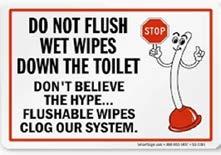
Clubhouse Rentals
Oct. 15 - Tom McBride
Oct. 19 - Joan Rucker
Oct. 25 - Jessica Likos
Nov. 09 - Craft Show
Nov. 14 - Bridge Club
Nov. 16 - Paul Feist
Dec. 01 - Scott & Stacy Marney
Dec. 7 - Rhonda Leuenberger
Dec. 12 - Bridge Club
Dec. 14 - Linda Calderwood
Dec. 22 - Scott Marney
Board of Director Meetings
Oct. 28 - Sherwood Lake Board Meeting
Nov. 25 - Sherwood Lake Board Meeting
Dec. 23 - Sherwood Lake Board Meeting
Other Events
Nov. 12 - Sherwood Improvement District Meeting
Dec. 10 - Sherwood Improvement District Meeting
Reminders
Lake Patrol Schedule:
Monday-Friday 9:00am to 2:30pm – on call only Monday-Friday 2:30pm to 9:00pm Saturday-Sunday 9:00am to 9:00pm
Please call 785-221-2628 if you need assistance.
Access to Sherwood Scene
Know a member who cannot access the Sherwood Scene online? Have them contact 785-221-3248 or manager@sherwoodlakeclub.org to have a hard copy provided.
Shoreline and Dock
Any dock or shoreline additions or improvements must be approved by SLC. KDWR and Shawnee County Planning require a permit for any NEW improvements. Repairs or replacing existing shoreline without changing the layout do not require permits. When in doubt, give the SLC Lake Manager a call at 785-221-3248. For new docks or lifts contact Rob Seitz at 785-478-1745.
You can watch the video and take the quiz via the website. If you do not have access, contact the Lake Club Manager 785-221-3248 or email manager@sherwoodlakeclub.org

Abig “Thank You” goes out to Chris Towle for planning and coordinating the Food Truck Wednesdays again this year. They were great and a nice variety.
Another Summer has flown by and without a major incident on the water. We can all thank the Sherwood Lake Patrol for their diligence and help.
Remember to call Eric or Travis when you plan to remove your boat for the winter.
I sat here wondering what to write since we have been fortunate having such a nice, quiet summer of boating and fun. The thanks for the calmness surrounding the lake this year goes to all of you for respecting the rules, regulations and especially each other while on the lake. Thank you!
We still have the nagging issues surrounding the lake---Dam & Spillway construction (waiting on FEMA), water level in the lake, and safety for the Lake Members, their families, and guests. The Board of Directors are working on all three of these issues.
Another priority is Lake Quality. With continuous water testing, silt basin construction and education for the Lake Club Membership about keeping fertilizer, leaves, sand, and trees out of the lake we are working to maintain the lake for fun and recreational activities.
Again, I urge you to attend at least one Sherwood Board Meeting the fourth Monday of each month at 6:00pm at the Sherwood Clubhouse.
Thank you, Tom
Andrew HInkle
Bruce Kahre
Ashley & Toni Grady
Whitney Baker
Leslie Riegsecker-Murata
Dave Sandir - 7537 SW Robinhood Ct.
Greg Umscheid
Greg Yakshaw
Ryan Hamilton
Mark Degroff
Holly Johnson

Hello members, I am sure everyone is done with the storms and damage done to lifts, docks, canopies, sinking watercraft, trees, and property. Our Lake Patrol has been picking up debris and assisting members tow watercraft to the beach for repair. Back to normalization.
With the lake activities winding down. Safety is our priority for any lake activities. Rules for lake operation are on the website for review.
When looking to rent the beach pavilion or clubhouse use the quick links on the website to view availability.
July 4 holiday weekend was a success even with the Red Flag for high water. Thank you to all the volunteers who assisted with cooking hot dogs, serving hot dogs, preparation and clean up. Thank you to all the volunteers who organized races around the lake, fishing, volleyball, horseshoes, and beach games.
Lake Patrol hours
Monday-Friday 2:30pm till 9:00pm Saturday-Sunday 9:00am till 9:00pm
Lake buoys will be removed in the first part of November.
The manager is requesting members review their emails. Members currently using their place of employment as an email address have a possibility of being blocked or being considered spam since we send all member emails. If you know your login and username you can use the website to edit your information.
If you do not know your login information, please send an email to office@sherwoodlakeclub.org or manager@sherwoodlakeclub.org
• Calendar
• Request Clubhouse Rental
• Request Beach Shelter Rental
• Your Boat Registrations
• Boat Fees and Restrictions
• Boat Registration - Motorized
• Boat Registration - Non-Motor
• Boater Safety Course & Quiz
• Dock System Changes Request
• Sherwood Scene Archive
• Map of Members
• Rules of Lake Sherwood
• Bylaws of Lake Sherwood
• BOD Meeting Minutes
• Dam & Spillway Info
• Marina Waiting List
• Marina Slip Allocation Process
• Boats For Sale
• Marina Diagram
• Board of Directors
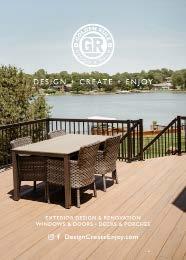
The Sherwood Lake Club Board of Directors has approved the following Marina Slip Allocation Policies as Rules to be included in the Lake Club’s Rules and Regulations. The Lake Club’s Rules and Regulations are currently undergoing a review process. When the Rules and Regulations review process is finalized and approved by the Board, the Marina Slip Allocation Rules will be included as new Section K of the Sherwood Lake Club Rules and Regulation.
1. There are 22 (twenty-two) eleven-foot-wide slips and 12 (twelve) nine-foot-wide slips in the SLC marina, for a total slip availability of 34.
2. Slips may be leased by Sherwood Lake Club members only and no subleases are allowed. A slip must be used for the lessee’s own boat.
3. Slips are leased for a one-year term, commencing on April 1 each year. The price will be set by the SLC Board of Directors Provided there is a waiting list, Leases will not be renewed for slips that are left vacant for 60 days or more during the boating season (June thru September).
4. A Lease is specific to an individual membership and does not pass to the next property owner when a boat is sold or transferred.
5. The Club shall maintain a nine-foot-wide marina slip waiting list and an eleven-foot-wide marina slip waiting list. Members can request to be on either or both lists. No member may be added to the eleven-foot waiting list unless they either own or intend to purchase a lift or pontoon that requires an eleven-foot slip.
6. Only 1 (one) slip may be leased per member. Any members who currently lease two slips will be grandfathered in as long as they remain eligible for leasing.
7. Priority of slip allocation and waiting list guidelines.
a. Marina slips shall be reallocated each year with priority given to B-memberships.
b. A prior year A-member lessee shall not be offered a Lease unless a slip is available because no B-member desires a slip or an exception is granted under ( g ) below.
c. Each B-member lessee shall be offered a first right of refusal to renew their Lease, but if their Lease was for an eleven-foot slip but their boat does not require an eleven-foot slip they will be required to accept a nine-foot slip, provided there is a nine-foot slip is available. All Lease renewals must be completed, executed and paid before March 1st after which an offer to lease will be made to the member at the top of the appropriate waiting list.
d. If an eleven-foot marina slip becomes available, it shall be offered to the member on the top of the eleven-foot slip waiting list.
e. If a nine-foot marina slip becomes available, it shall be offered to the member at the top of the nine-foot slip waiting list.
f. Declining an offer, or not accepting an offer within fourteen calendar days, shall result in either the removal from that waiting list or moving to the bottom of that waiting list.
g. The Board of Directors may make an exception to allow an A-member to be added to the waiting lists if the A-member has constant shallow water at their property that prevents them from having a boat located along their shoreline.
8. Boat Lifts installed in Marina Slips
a. Lifts may be installed in slips leased by a member with prior Board Approval. Lessee must fill out the proper SLC Lift Application and submit it to the Board before any approval can be made. Any electrical work, including low voltage systems, must be done to code by a properly certified and licensed electrician.
b. Lifts must remain in good as new working condition with all functions of the lift operating properly. Lessee will be notified in writing by Sherwood Lake Club if a Lift is found not to be, in good as new working condition. Lessee will be given 45 days from date of notification to make repairs. The Board may grant requested extensions for extenuating circumstances, such as part availability. Failure to comply and make repairs may result in immediate termination of the Lease but first right of refusal to renew the Lease as stated in Article 7. c. above, will not be offered.
c. Lifts will remain the property of the member leasing the slip. If for any reason the Lease is not renewed by March 1st of each year, under the terms of Article 7. c. above, the lift must be removed by March 31st. Failure to remove the lift by March 31st will forfeit ownership in the lift with ownership passing to Sherwood Lake Club.”

The 50+ years of the Sherwood Sailing Club has been fantastic. Our June sailing lessons went well as new and current members learned about sailing and right-of-way rules. The club has grown with new members and 40 pirates made it to our annual Pirate’s Treasure Hunt Party. The 50th Annual Commodore Cup Regatta saw Al Hunt win his 9th Cup, with Jo Hunt, Jim Phelps, Dave Orr, and Bob Bobo winning the rest of the regatta trophies. Season races are scheduled through September 29 on Sundays with a 1:30 start and are sure to be exciting as a fleet of up to 18 sailboats may be present.
All lake members are welcome to join the racing/social club, and we will provide lessons for those interested in learning to sail a sailboat. Racing is not required to be a member, and enjoy our social parties and treats at the beach shelter after Sunday races (but we will try to talk you into it.
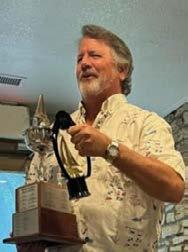

The following creel, possession and slot limits shall apply to all fishing on Lake Sherwood.
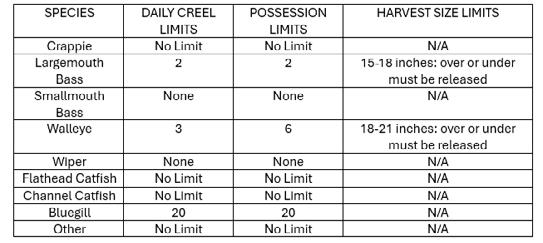
Individuals that violate these limits shall be suspended from all Lake Club Privileges for one (1) year from date of violation, in addition to “Penalties” as may be determined under the Sherwood Lake Club Rules and Regulations which may be amended or updated from time to time.
Adopted 05/2021
Q. What have you been catching lately?
A. Bass, channel cat, and perch
Q. What bait and lures do you use?
A. Jigs, spinner bait, and flicker shad.
Q. Where on the lake is the best place to fish?
A. For bass, along the dam and in shallow water under docks.
Q. Will you fish for something different, now that it is fall?
A. As water temperatures cool down, crappie will be moving back toward the bank areas.
Q. What to use to catch crappie?
A. Jigs are the best and sometimes flicker shad. Worms can also be used.
Q. What tips do you have for new fishermen who want to get started this fall?
A. Buy good dependable equipment. Get online and look up how to catch different species of fish!
The fourth water samples for the current season were obtained on August 20, 2024 between 1110 and 1150 hours utilizing the standardized water sampling protocol. The samples taken on August 20th were analyzed by Midwest Laboratories in Omaha, NB.
The samples indicate that the lake is overall healthy. Algae were noted which can impact recreational desirability. Elevated microcystins were not detected which is encouraging.
Microbiologic studies for E. coli and fecal coliforms detected both at different sites but none of the sample sites had levels of concern for recreational use of the lake.
The fourth and final water quality sampling indicates that the lake is safe for recreational use though the West End site’s physical condition and recreational suitability are less than ideal compared to the other three sites sampled.
Continue Reading on pg. 20

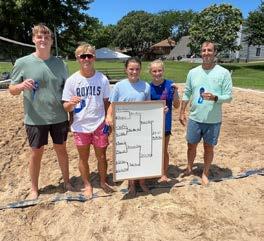
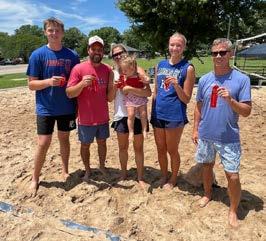
1st place - Soft Serve (L to R) Sam Bettis, Luke Wolverton, Jenna Wendling, Caroline Wolverton, Mark Bettis 2nd place - Rizz & Glizz (L to R) Max Bettis, Eric Wendling, Megan Wendling, Presley Kreter, Mick Wolverton
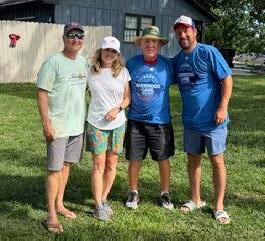
Horseshoes
1st place – John and Eric Wendling
2nd place – Tom and Becky (Bromich) Samuelson
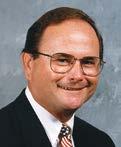
Chip Munk, Agent 28th & Wanamaker,, 5990 SW 28th St Topeka, KS 66614 Bus: 785-272-8858 chip.munk.b6g6@statefarm.com
Get great service & great rates.
You know I’m always here with Good Neighbor service. But I’m also here with surprisingly great rates for everyone. Call me for a quote to see how much you can save. You might be surprised.
Like a good neighbor, State Farm is there.®
State Farm Bloomington, IL 2001875
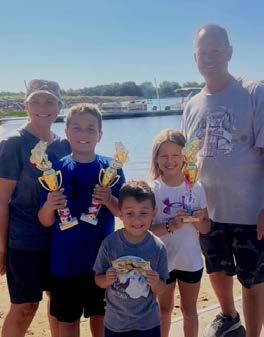
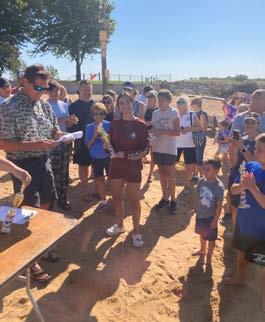
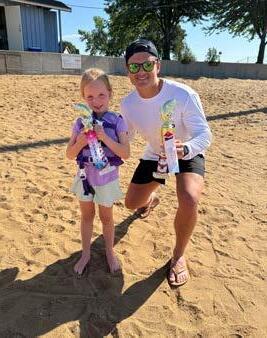
Fishing
Most Fish
Men: Barrett Bromich (18)
Ladies: Cheryl Bromich (21)
Boys: Miles Burgess (40)
Girls: Jenna Wendling (21)
Largest Game Fish
Men: Jack O’Neal (1 lb, 3 oz bass)
Ladies: Karen Thorp (4 lb, 2 oz bass)
Boys: Brody Bromich (2 lb, 15 oz bass)
Girls: Quinn Trobough (1 lb, 8 oz bass)
Largest Fish
Men: Jack O’Neal
Ladies: Cheryl Bromich ( 4 lb, 5 oz)
Boys: Jackson Hamilton (7 lb, 11 oz carp)
Girls: Quinn Trobough
Most Carp
Jackson Hamilton and Tensley Hamilton (Tie)
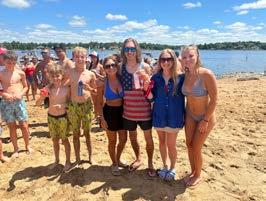


Tug-O-War
Under 16 – North side
Over 16 – North side
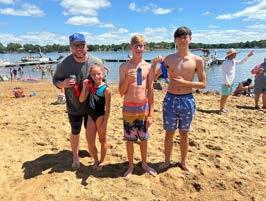
Heat 1
1st –
2nd – Bailey Thorp and Eryn Samuelson
3rd – Parker Rittenhouse and Cheryl Bromich
Heat 2
1st – Jackson Whitehead and Ashton Snyder
2nd – Madi Wester and Josh Massey
Heat 3
1st – (tie) Austin Elliott and Alex Van Nort
1st – (tie)
3rd – Nicholas Wendling and Jude S.
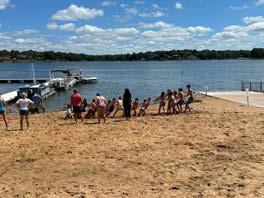
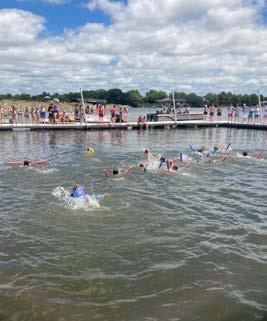
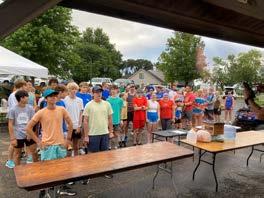
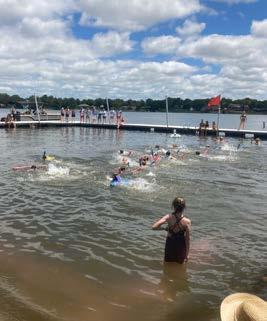

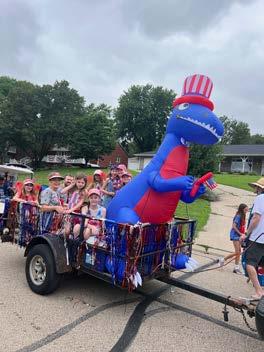
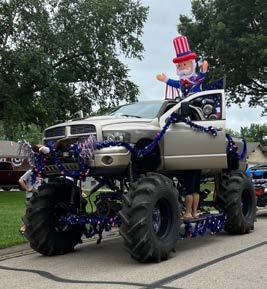
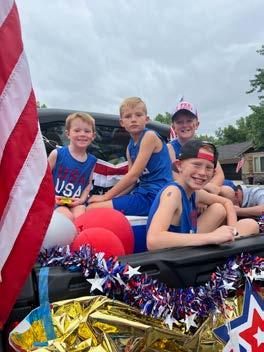

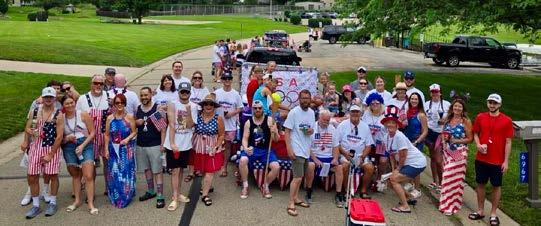
Big Floats
1st place – (tie) America Monster Truck (Anderson) and Dyno America (Beck) 2nd place – (tie) Old Glory Eagle (Ast) and The Stars & Stripes (Devlin)
Middle Floats
1st place – Sherwood Olympics (Hutchinson, Seitz, Handley, Gwaltney and Hunt) 2nd place – Celebrate the 4th (Bish)
Small Floats
1st place – Pop It Like It’s Hot (Rempe) 2nd place – Papa Bill’s Crew (Glaze)
Animal
1st place – Leo the Dog 2nd place – Stanley Dog (Lynch)


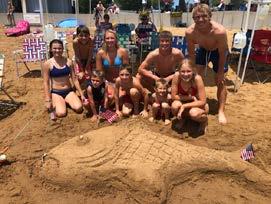
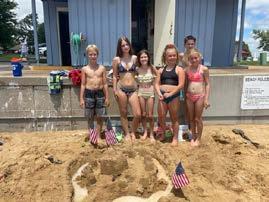
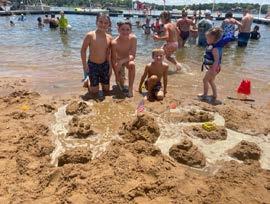
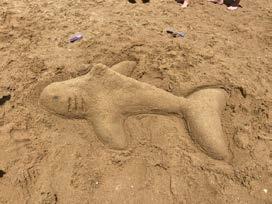
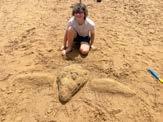
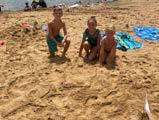
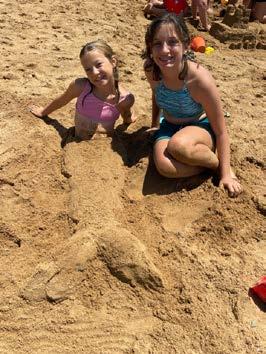

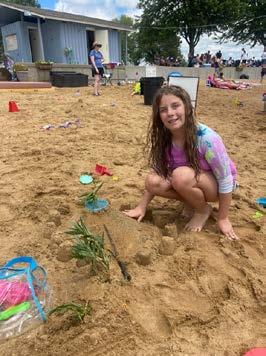
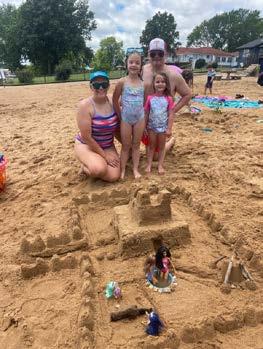
We apologize for any missing or inaccurate information. Please email office@sherwoodlakeclub.org if you have any results or corrections and we’ll feature them in the next Scene. Thanks!
Our apology and thank you to anyone we missed
Larre Betsworth, Brandon Betsworth & Rihanna, George Hopper, Chuck Towle, Rob Seitz, Judy Edington, Linda Meyer, Mike Kongs, Judy & Duane Nightingale, Dave and Debbie Ast – Hot Dog Lunch
Dave Ast, John Wendling - Horseshoes
Paul Feist, Brad & Talisa Hopper - Volleyball
Telisa Stringer, Jane & Russ Greene, Greg Johnson - Lake Run
Julie Hein, Bev Bernardi – Parade
Kerry O'Neal, Larre Betsworth - Fishing tournament
Annette Beck, Lori Hutchinson – Sandcastle contest
Rob & Laura Harrison – Noodle Races
Marion & Bob Bobo – Balloon Toss
Al & Jo Hunt – Tug of War
Thank You to Dillons for their donation of our hotdog lunch
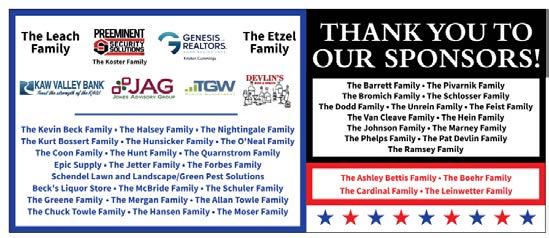


Plunge water samples were obtained from four locations:
1 Beach – mid-point of the lakeside dock near the “No Wake” buoy
2 Alyesbury Cove – the mouth midway between the points defining the entrance near the “No Wake” buoy
3 Chelmsford Cove – the mouth midway between the points defining the entrance near the “No Wake” buoy
4 West End – originally the plan called for sampling at the bridge on the lake side of Indian Hills Road but shallow depth precluded boat access; the sample was obtained at mid-channel just off of the Lynch’s point.
The weather conditions were cloudy and windy during the sampling period. Ambient air temperature was recorded as 730.-76.1ºF at various sites.
The physical condition of the water at the sites was assessed and this data recorded on the Field Data Sheet using the following scale:
1 = Crystal Clear
2 = Slightly Cloudy/a Little Algae
3 = Green, Yellow, Brown Algae
4 = High Algae/Limited Clarity and/or Odor
5 = High Algae w/one or more of:
• Massive Floating Scum on Lake or Washed up on Shore
• Strong, Foul Odor
• Fish Kill (Note Number and Type of Fish in “NOTES”)
The recreational suitability of the lake was assessed and this data recorded on the Field Data Sheet using the following scale:
1 = Beautiful, Could NOT be Better
2 = Minor Aesthetic Problem/Excellent for Swimming or Boating
3 = Swimming & Aesthetic Enjoyment Slightly Impaired due to Algae Levels
4 = Sufficient Algae Level so that Boating is Okay but Swimming is not
5 = High Algae Level so that Swimming & Aesthetic Enjoyment Nearly Impossible
At each site, a plunge sample was taken at 18 inches depth. Upon withdrawing the sample, the water temperature was immediately taken. Raw water samples were tested for pH immediately thereafter.
TDS measurements are dominated by dissolved salts and minerals, primarily those that are sodium and calcium based. TDS measurements reflect the “hardness” of water. In general, the higher the TDS value, the greater the hardness value of the sample. Also, the greater the TDS, the lower the turbidity of the sample or conversely the greater the clarity. This is easily understood when one remembers that TDS measures “dissolved” solids – those that are very small and considered to be in solution rather than suspended. Suspended solids increase turbidity and decrease clarity.
Following the collection of samples, Secchi disk measurements of water clarity were attempted on the shady side of the collection boat. However, technical difficulties were encountered with the data recording precluding measurement.
The following information is provided to better understand the accompanying tables of results. Please refer to these definitions/explanations when reviewing the results and analysis.
Ammonia as N. Ammonia exists as either an unionized or ionized form. The unionized form is many times more toxic to fish and aquatic life than the ionized form. Which form predominates is driven by both pH of the water and the temperature of the water.
Nitrate/Nitrite Nitrogen. Through the nitrogen cycle, ammonia is oxidized first to nitrite and then to nitrate. The nitrification process is also pH and temperature dependent. Nitrification results in the water becoming more acidic (lower pH). Elevated levels of both nitrite and nitrate stress fish and aquatic organisms. The principle sources of elevated nitrate in a water body are fertilizers, animal waste
(livestock manure and waterfowl feces), and septic tanks.
Total Kjeldahl Nitrogen. Total Kjeldahl nitrogen is the total concentration of organic nitrogen, ammonia, and ammonium. Organic nitrogen is nitrogen that occurs in amino acids or nucleotides (RNA or DNA). Nitrates/nitrites are not included in the Kjeldahl value. Therefore, by measuring the amount of Ammonia as Nitrogen (N) and subtracting this from the total Kjeldahl nitrogen, a measure of the nitrogen contained in organic form is obtained.
Phosphorus. Phosphorus is an essential nutrient for plant and animal growth. One pound of phosphorus can produce over 500 pounds of aquatic vegetation. Excess phosphorus is the primary driver for algal blooms. Phosphorus enters the lake due to yard and agricultural fertilization with some component due to manure.
Microcystin. Microcystins are toxins produced by cyanobacteria, bacteria that are known as “blue green algae.” These are toxic to animals and people – every year dogs in Kansas die after swimming in lakes that are having blue green algae blooms.
Microbiology
E. coli. The presence of E. coli in a water sample indicates fecal contamination from warm-blooded animals (including humans). Swimming beaches pose a greater risk to human health and safety than open water areas. The Environmental Protection Agency has established criteria designed to protect primary contact recreation, including swimming, bathing, surfing, water skiing, tubing, water play by children, and similar water contact activities where a high degree of bodily contact with the water, immersion and ingestion are likely. The criteria are not regulations but are guidelines published by the EPA to assist states in establishing water quality standards. There are two sets of criteria reflecting differing levels of risk. The only criteria associated with essentially zero risk when engaged in primary contact water recreation is zero colony-forming units (CFUs) found when culturing the water sample for E. coli. The most conservative criteria still may result in 32 individuals developing illness from a group of 1,000 who were engaged in primary contact water recreation. That value is a geometric mean (GM) of 100 cfu/100 ml of water sampled. The GM is the mean value of three samples taken over a 60-day period. The statistical threshold value (STV) for the same sample with the same
level of risk is 320 cfu/100 ml of water sampled. The STV approximates the 90th percentile of the water quality distribution and is intended to be a value that should not be exceeded by more than 10 percent of the samples taken. The LQEC recommends that the GM value of 100 cfu/100 ml of water sampled with the STV of 320 cfu/100 ml of water sampled be adopted for water quality monitoring purposes. For single samples, such as those currently being obtained, the number of cfu/ml for E. coli should not exceed 126 cfu/100 ml, a value selected by the EPA based on studies and published in 1986. There has been ongoing discussion regarding the GM and the time period over which it should be measured. The most recent Kansas white paper published in January 2011 indicated that the GM should be determined over the course of the sampling season. Single sample limits for the probability of disease likely represent the most reasonable approach for a lake like Sherwood. To that end, the LQEC recommends that a single limit of 126 cfu/100 ml be established for E. coli. If that limit is exceeded, several samples should be retested until the limit is not reached or the geometric mean of all samples falls below 100 cfu/100 ml. As new information is obtained and new recommendations published for acceptable limits, our standards should be adapted.
When a sample exceeds the thresholds, there are specific actions such as issuing a beach advisory regarding water contact recreation which should be pursued to maintain the safety of the membership.
NOTE: The EPA considers “MPN” and “CFU” to be equivalent measures for bacteria in a water sample. The correlation is 1:1. The difference is in how the measurement is obtained. MPN measurements on agar, for example. After culture, the colonies are counted and the values reported. Both values carry a 95% confidence interval.
Fecal Coliforms. Fecal coliforms are intestinal bacteria that grow at higher temperatures, which makes their presence a more accurate indicator of fecal contamination by warm-blooded animals. A value over 200 cfu/100 ml of water sample collected is associated with a greater chance of pathogenic organisms being present. Given this correlation, monitoring of fecal coliforms provides important information related to the probability of disease-causing intestinal bacteria being present in quantities sufficient to pose risk to primary water contact recreational participants.
Ammonia as N. At three of the four sites ammonia as N measurements were less than the threshold of reporting of 0.10 mg/L. At the West End site ammonia as N measured 0.13 barely exceeding the threshold for reporting.
Total Kjeldahl Nitrogen. Total Kjeldahl nitrogen is a measure of ammonia, ammonium, and organic nitrogen. This value does not reflect nitrogen in the form of nitrate/nitrite. At all four sites total Kjeldahl nitrogen exceeded the threshold for reporting. The absence of Ammonia as N indicates that the total Kjeldahl readings are due to excess organic nitrogen. At the West End site a small contribution to total Kjeldahl nitrogen was due to ammonia as N. The total Kjeldahl nitrogen reading reflects the increase in phytoplankton that contributes a greenish cast to the water.
Aquatic organic nitrogen is comprised of truly dissolved organic nitrogen (DON) and particulate organic nitrogen (PON). DON is the material that can pass through a 0.2 micrometer filter, while PON is the material retained in the filter. A large portion of DON in lakes typically originates from release by algae and phytoplankton. The biomass of both algae and phytoplankton will vary with season and depth with DON concentrations varying as a result. An elevated organic nitrogen level may become problematic if conditions develop that promote conversion to ammonium and ultimately to nitrate. This occurs when bacteria convert organic nitrogen into ammonia that then is converted through nitrification into nitrite and nitrate contributing to nutrient pollution.
Microcystin. Microcystins are toxins produced by blue-green algae (cyanobacteria). All four sites had microcystin readings below the threshold for reporting. Last year (2023) was the first year that elevated levels were noted consistently. Typically one expects to find elevated microcystins nearer to shore where blue-green algal blooms often occur. The presence in deeper water indicates the presence of blue-green algae at a level sufficient to produce detectable microcystins but not detectable blooms. The absence of measurable microcystin levels at all four sites this late in the season is due to more favorable conditions in the lake reducing the probability of harmful algal blooms. Likely this reflects periodic rains that helped to oxygenate and mix the stratified lake water.
Nitrate/Nitrite. As noted, the principal source of elevated nitrate in most water bodies is fertilizer. Prior LQEC studies of lawn fertilization practices did not indicate excess levels at times of lawn fertilization suggesting that runoff is not a major source of nitrate/nitrite in the lake. Another source of nitrate/nitrite is the nitrification cycle. All four sites failed to reach the threshold for reporting.
Phosphorus. Fertilization is a contributor to the phosphorus load in a body of water during the spring season. Leaf pollution contributes to phosphorus loading in the fall season. A detectable level of phosphorus was found at two of the sample sites. The West End measured a level of 0.2 mg/L which is well above the threshold for reporting of 0.05 mg/L. With the heavily forested drainage upstream of the cove, leaf decomposition with the production of “phosphorus tea” is the likely explanation. Another source of phosphorus in the water sample is the release from bottom sediments which occurs when stratification of the water column happens and the lower levels become oxygen depleted. Horse manure may also contribute. Unfortunately this site will be vulnerable to harmful algal blooms going forward when more significant stagnation and stratification of the water column occurs. Phosphorus is a significant driver of algal blooms and an excess is present already in the West End. Though the Alyesbury-Chelmsford site just reached the threshold for reporting at 0.05, this was the first time this season that measurable levels occurred at this site. This will bear monitoring in the future.
Acid/Base. The pH of the samples varied between 7.45 and 7.67. Neutral pH is 7.0, which indicates that the lake is slightly alkaline. Freshwater lakes and ponds usually have a pH of 6-8 depending somewhat on the surrounding soil and bedrock. The pH of limestone, commonly found in this area is 7.5-8. The acid-base balance is appropriate for the existing conditions.
Secchi Disk/TDS. The Secchi disk is used to obtain a visual assessment of the clarity/turbidity of the water. Its interpretation is subject to several observer variables and environmental conditions. The Secchi disk readings are unavailable due to technical difficulties for this sample period. The greater the value, the greater is the clarity of the water.
Readings for TDS for the August 2024 sample sites varied between 243 and 252. Data remains insufficient to identify any trends. These parameters (Secchi Disk and TDS) measure different physical aspects of a water sample.
E. coli. E. coli are bacteria that occur in water samples due to fecal contamination from warm-blooded animals. For single samples, the number of E. coli should not exceed 126 CFU/100 ml. CFU and MFN are considered equivalent. The samples from Aylesbury-Dancaster and the West End both had detectable and measurable levels of E. coli but neither reached the level of concern for single sample reporting. Of note, the highest levels for E. coli were noted at the Aylesbury-Dancaster site.
Fecal Coliforms. Fecal coliforms are associated with pathogenic (disease-causing) bacteria. Values greater than 200 CFU/100 ml in a sample are cause for concern. The samples collected revealed detectable levels of fecal coliforms at the Beach and Aylesbury-Chelmsford sites. Neither site had levels reaching the threshold for concern.
All minutes can be found on the website, sherwoodlakeclub.org. Members can use the links below to retrieve them.
May 20 - http://www.sherwoodlakeclub.org/docs/20240520_Board_Minutes.docx.pdf
June 24 - http://www.sherwoodlakeclub.org/docs/20240624_Board_Minutes_1.pdf
July 22 - http://www.sherwoodlakeclub.org/docs/20240722_Board_Minutes_1.pdf